WHEN KEEPING IT REAL GOES WRONG
Throughout the 1970s New York City grappled with severe financial hardship, teetering on the brink of bankruptcy. Visible neglect manifested the city's fiscal crisis: graffiti-covered and often unreliable subway cars, dirty streets, and soaring crime rates, all contributing to the city's infamous reputation.
This disarray and chaos added to the city's unyielding charm with a deteriorating urban environment setting the stage for a burst of cultural movements, like the emergence of a vibrant art scene, with artists like Keith Haring and Jean-Michel Basquiat drawing inspiration from New York's grittiness. The film industry produced classics like Taxi Driver and The French Connection, mirroring the city's edgy ambiance, embedding its dark alleys and mysterious figures into the era's iconic cinematic aesthetic.
A PUNK BANDS PUNK BAND
The New York Dolls were flamboyant, unapologetically bold and stand as precursors to the punk movement that emerged from the dingy confines of CBGB in the Bowery, often credited as the cradle of American punk, Bands such as the Ramones, Talking Heads, and Television built upon the Dolls’ foundation—each adding their unique voice but undeniably walking a path The Dolls had carved through aesthetic, inspired by a blend of drag, glam rock influences such as David Bowie and Marc Bolan, and gritty Lower East Side street style. Their look was as provocative and chaotic as their sound—a harbinger of the punk ethos to come.
In the convoluted tapestry of music history, The New York Dolls occupy a vibrant, indelible square; a chaotic collage of lipstick-smeared rebellion and guitar-tinged aggression that helped weave the very fabric of punk music in 1970s New York City.
The band’s performances were synonymous with raw energy, a certain type of controlled recklessness. Bands and musicians saw this raucous blend of rock 'n' roll, glam, and proto-punk as a blueprint for defiance, a license to express their most authentic, unvarnished selves, no matter how messy or weird.
Their role in heralding the punk movement is monumental, a testament to raw energy and unapologetic flamboyance that shattered the conventional norms of rock music and culture.
FEELING HOT HOT HOT
In an intriguing twist of fate and flamboyance, David Johansen—the Dolls' gravel-voiced lead singer, known for his rambunctious stage presence and potent lyrics—is best remembered for a completely different musical incarnation.
After the dissolution of the Dolls in the mid-1980s, Johansen began a solo career exploring the nooks and crannies of rock 'n' roll, eventually morphing into Buster Poindexter, a persona channeling the spirit of a postmodern lounge singer. With his slicked-back hair and extra dirty martini, Johansen now Poindexter became synonymous with the hit "Hot Hot Hot," a calypso-infused party anthem that, in stark contrast to Johansen's punk roots, became a pulsating staple of dance floors and party playlists worldwide.
This transformation— from a punk pioneer screaming into the mic in dive bars across the Bowery to the suave, tuxedo-clad crooner leading conga lines at upscale Manhattan nightclubs—might seem like an abrupt left turn, but it's a testament to the inexhaustible versatility and enduring showmanship of Johansen himself.
In many ways, "Hot Hot Hot" and the creation of Buster Poindexter were Johansen's exploration of performance art, a way to engage with music and audiences through a different lens—one that was equally entertaining but layered with irony and wit.
^^^ Watch just the first 45 seconds of the above clip and embark on a journey from the raucous, raw energy of the Dolls into Buster Poindexter’s polished, tongue-in-cheek vibrancy that emanates the same raucous, raw energy.
Love it or hate it, "Hot Hot Hot" encapsulates a broader narrative about the evolution of music and identity. Demonstrating how artists can traverse genres, personas, and expectations to connect with audiences across different eras and tastes into a song known to almost everyone today. Johansen, in embodying these seemingly disparate worlds, showcased his ability not just to adapt but to pioneer; turning personal reinvention into a form of artistry.
PERSONALITY CRISIS
In the future, we will likely be able to type a few phrases into a text box and generate a full-length film. While that tech is not here yet, it is almost as if advanced AI can read my mind, because when I searched for David Johansen, the first result was a documentary, not just any documentary, but a Marty Scorsese flick about Johansen’s life called Personality Crisis.
Johansen and his alter-ego Poindexter remind us that the core of performance—whether clad in leather and growling punk anthems or donning a tuxedo and belting out cabaret classics—is about connection, emotion, and the unending quest to both discover and redefine oneself and possibly become a one-hit wonder twice.
ADVENTURES WITH MEME COINS AND THE CASE OF IDIOT CAPITALISM
Solana aka the coin that SBF was telling his prison guards to buy is having a moment. The Solana ecosystem’s popularity is due to the fact it is the go-to marketplace to participate in the pre-sale of meme coins.
In a presale, a user will send Solana or SOL to a pre-seller who is minting new money usually in the form of a memecoin. If all goes as planned the sender receives tokens that are somehow worth far more than the original investment. Often the sender will tell friends about their great investing acumen aka how much money they just made, building demand for this coin and other pre-sale coins, creating a virtuous cycle akin to tulip mania.
Investing in Solana meme coins is likely worse than tulip mania as meme coins have no possibility of ever growing into a beautiful flower. Eventually, individuals will be left to wonder how could they be so dumb to “invest” hard-earned money into coins like Jeo Boden, Bonk, or the ever valuable dogwifhat whose community raised more than $700,000 to put a picture of said dog wif hat on The Sphere in Las Vegas.
SLERF-ONOMICS
Just when you thought it couldn’t get any dumber - behold the coin presale known as $SLERF
$Slerf emerged with a vision to be a fun and engaging meme coin, brimming with exciting content to propel its journey forward. However, on launch day, disaster struck when a major mishap resulted in the accidental burning of $10 million worth of $Slerf tokens, intended for distribution among 25,000 trusting presale buyers.
Let’s get this straight. You sent money to someone named Slerf with the expectation you were going to be rich but instead slerf accidentally burned all your money.
Could this get any worse?
Well, it can and it gets dumber.
What if “investors” decided that a token with no utility that burned most of its supply should have a market cap in the billions of dollars?
In the immediate aftermath of its launch, $Slerf rocketed to an all-time high market cap of $750 million within a few hours. Impressively, the day 1 24-hour trading volume surged close to $2.5billion, surpassing even the likes of ETH and USDC in trading volume.
Source: slerf.wtf
IN SUMMARY:
If you sent $10,000 to $SLERF on launch day. You woke up to see your investment has returned 75x overnight as $SERLF now sports a market cap of $750 million. Meaning you have $750,000 worth of $SLERF coins. You can actually buy a Lambo! Then you come to learn that because of Slerf’s mishap, you not only have nothing, but you also get to see the token you should have owned skyrocketing in price, but you don’t because it was accidentally destroyed (burned).
This leaves you with two terrible feelings:
The first is the world’s worst kind of unintended FOMO and the second is a realization that only comes after you frantically panic buy $SLERF so that you don’t miss more the move higher. The unshakeable feeling that this is all incredibly dumb and the FED needs to raise rates … a lot.
When keeping it real goes wrong

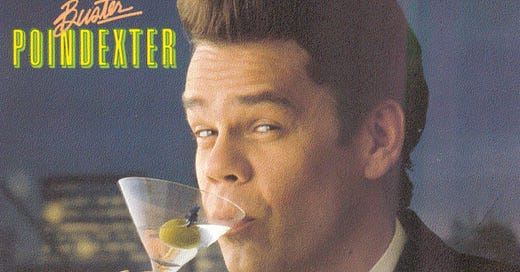


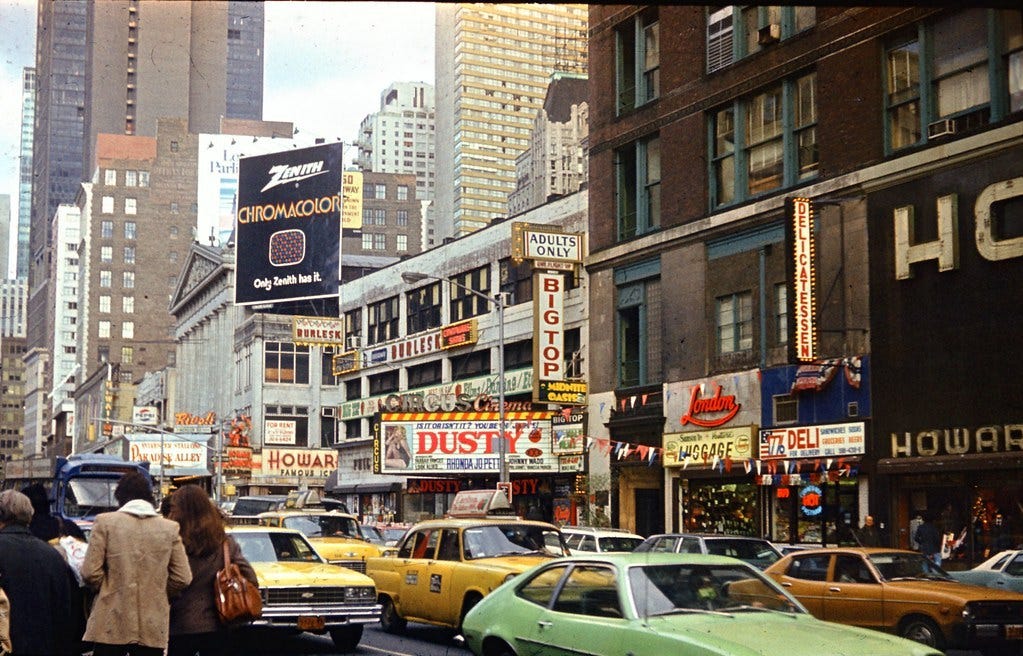
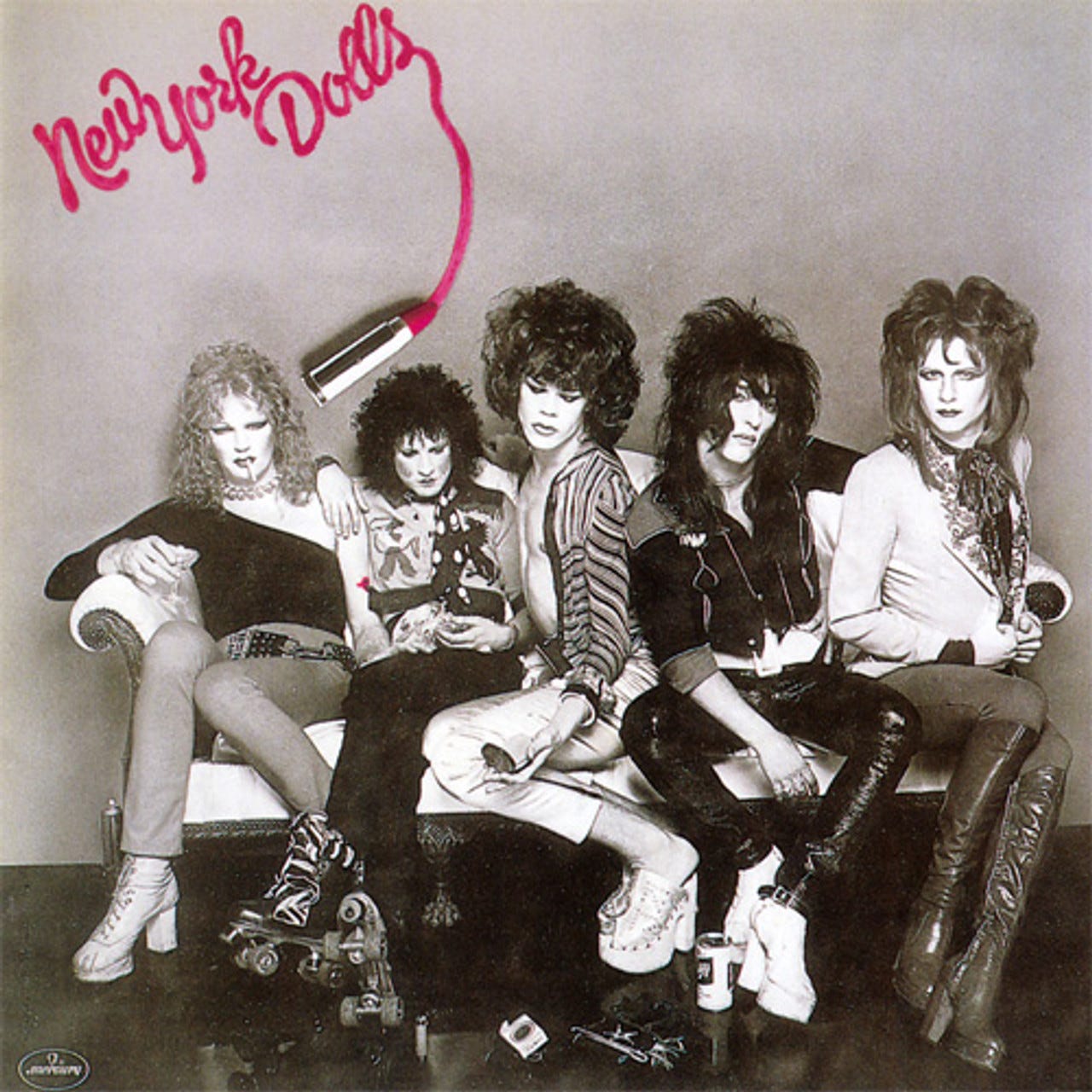

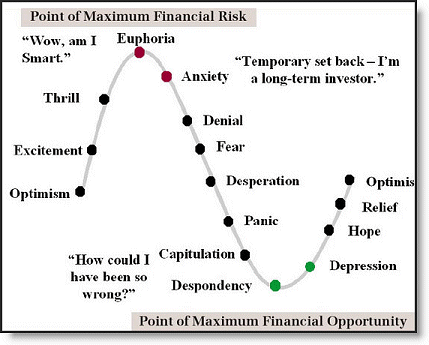

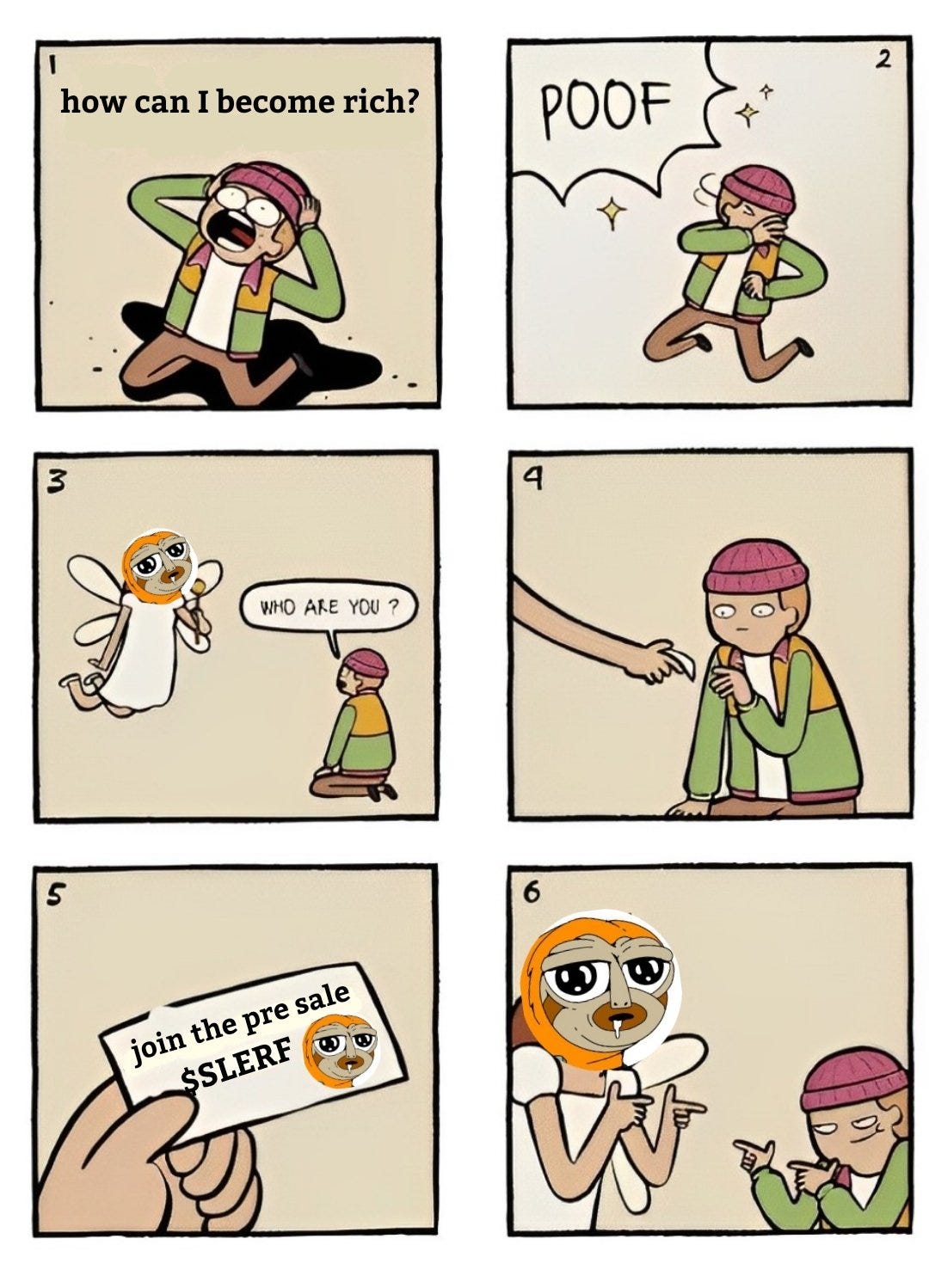
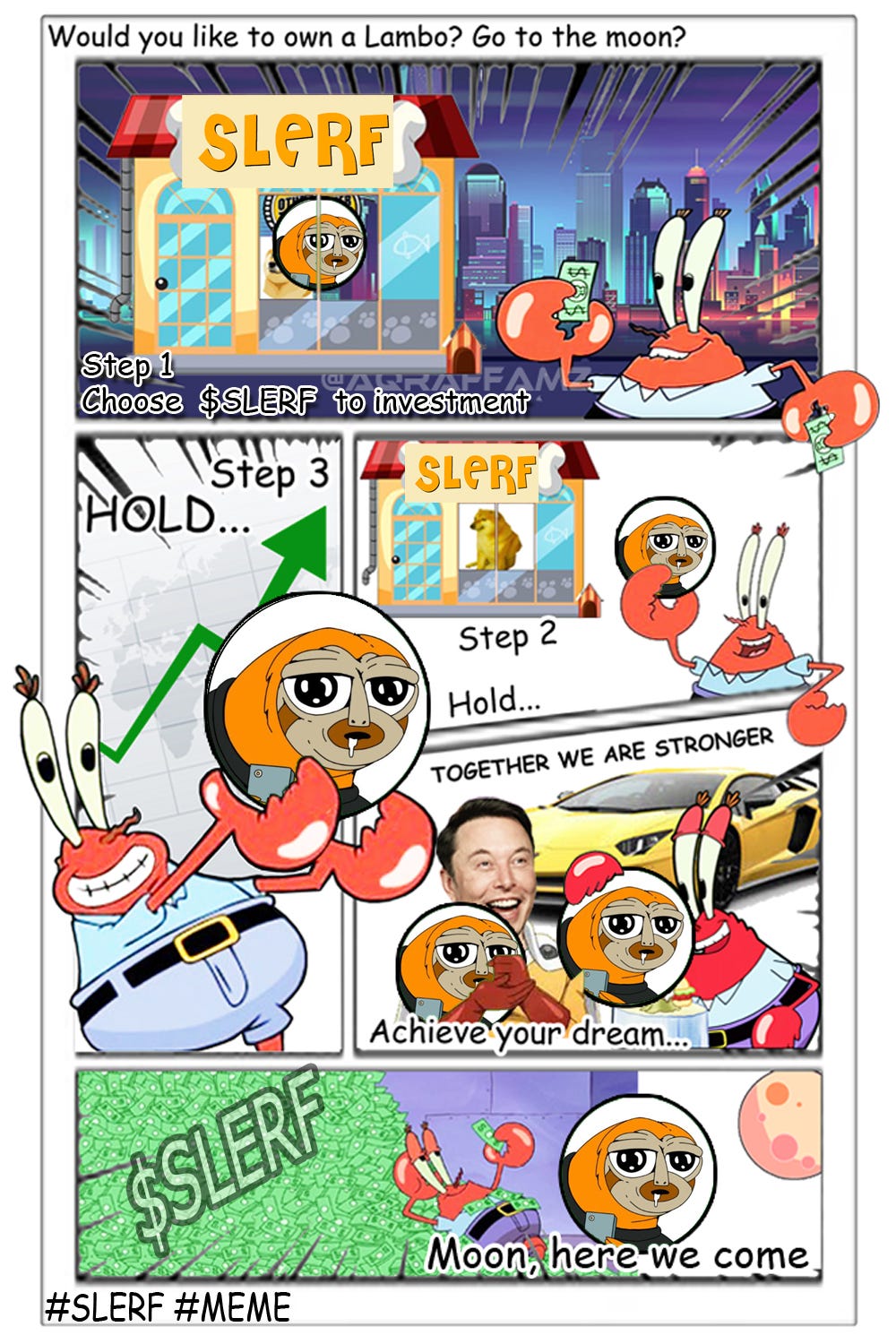


Love it Evan!